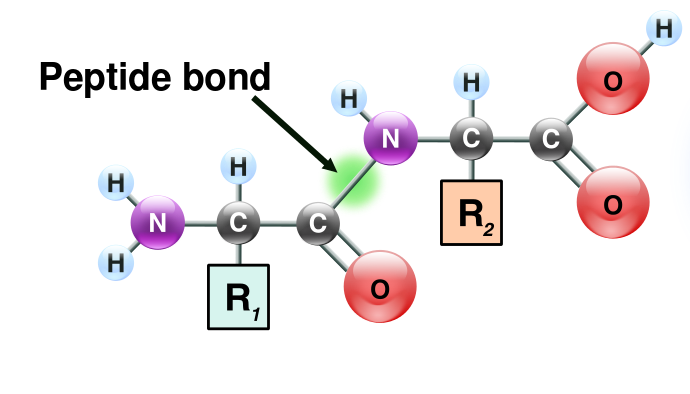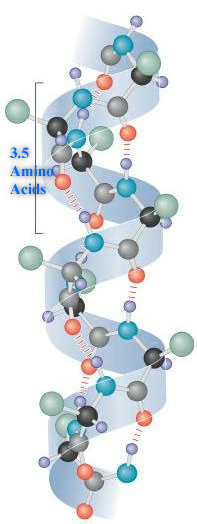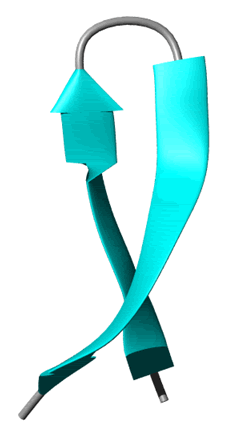7: Protein Structure
- Page ID
- 6097
eading & Problems:LNC 115-124, 125-143
Protein sequencing by mass spectrometry (MS)
Mass spectrometry is a method that can separate molecule by charge/mass ratio and can determine their masses to up to six to eight decimal places. As a result, the exact composition of peptides can be determined. The method can be used to recursively break the peptide and evaluate the product to determine the sequence. It can also be used to determine what proteins are in complex protein mixtures, and their relative quantities (e. g. as in all the proteins in a sample of tissue). These methods are widely used today. You can read more on this in LNC pages 100-102, but the book provides more detail than I expect you to know.
I. Structure of the peptide bond. (Image Source: https://en.wikipedia.org/wiki/Peptid...mationball.svg)

A.  Alpha Helix. (Image Source: https://commons.wikimedia.org/wiki/F...lixProtein.jpg)
Alpha Helix. (Image Source: https://commons.wikimedia.org/wiki/F...lixProtein.jpg)

B.  ß-sheet, two kinds parallel and antiparallel. !!This site requires Java and may be blocked in your browser!!
ß-sheet, two kinds parallel and antiparallel. !!This site requires Java and may be blocked in your browser!!


Anti-Parallel Parallel
A. Example: Dr. Gasser's JSmol version of  Myoglobin or this Jmol view,
Myoglobin or this Jmol view,  Myoglobin2.
Myoglobin2.
B. Example:  Chymotrypsin. A
Chymotrypsin. A  funny and timely article on Kendrew's elucidation of myoglobin structure.
funny and timely article on Kendrew's elucidation of myoglobin structure.
C. Example: Cyclophilin. To view this go to the following link and click the "Submit Request" button (if there is a problem, be sure that "jMol PDB Viewer" is selected in the upper right menu). Here is the  Cyclophilin link. !!This site requires Java and may be blocked in your browser!!
Cyclophilin link. !!This site requires Java and may be blocked in your browser!!
D. You can search among all known protein structures at the NIH " Molecules To Go" site and view them as described above.
Molecules To Go" site and view them as described above.
Contributors
Charles S. Gasser (Department of Molecular & Cellular Biology; UC Davis)


